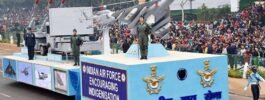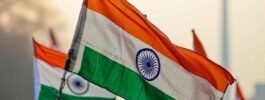Exploring Uncommon Festivals in India’s Remote Villages
India, a land of diverse cultures and traditions, hosts a myriad of festivals that are not only grand but also encapsulate the unique ethos of its many communities. Beyond the well-known national festivals, there are lesser-known local celebrations, deeply rooted in the customs and history of small villages. These festivals, often celebrated in just one or two villages, offer a fascinating glimpse into the local life and spiritual beliefs of the regions.
1. Kila Raipur Sports Festival, Punjab
- Location: Kila Raipur, Punjab
- Significance: Celebrates rural sports and strength
- Rituals: Includes unique competitions like bullock cart races, tug-of-war, and a showcase of traditional Punjabi sports.
The Kila Raipur Sports Festival, often dubbed the ‘Rural Olympics,’ is held annually in the small village of Kila Raipur near Ludhiana. Originating in the 1930s, this festival draws participants and spectators from various parts of India. It is a celebration of physical strength and traditional Punjabi sports, which include cart races, rope pulling, and even a competition where participants lift bicycles with their teeth. This festival not only promotes local sports but also keeps the spirit of traditional Punjabi culture alive.
2. Wangala Festival, Meghalaya
- Location: Garo Hills, Meghalaya
- Significance: Harvest festival dedicated to the Sun God of fertility
- Rituals: Features the indigenous dance and music of the Garo tribe, particularly the drum dance called ‘Dama Gogata’.
In the serene Garo Hills of Meghalaya, the Wangala Festival is a spectacular tribute to the agricultural practices and rich cultural heritage of the Garo tribe. This festival, celebrated over a week, marks the end of the harvest season and is an offering to Misi Saljong, the Sun God of fertility. The highlight is the 100-drums Wangala dance, where men and women dressed in colorful traditional attire perform rhythmic movements to the beat of drums, symbolizing gratitude and joy.
3. Phagli Festival, Himachal Pradesh
- Location: Kinnaur, Himachal Pradesh
- Significance: Marks the defeat of winter demons by the gods
- Rituals: Involves wearing masks and performing dances that narrate mythical stories.
Phagli is a winter festival celebrated in the Kinnaur district of Himachal Pradesh. This festival is deeply symbolic, representing the victory of good over evil, light over darkness, and warmth over cold. The locals, wearing elaborate costumes and masks, enact dances and dramas that tell tales of the gods defeating the demons of winter. This festival not only preserves the mythological stories of the region but also strengthens the community bond.
4. Kodungallur Bharani, Kerala
- Location: Kodungallur, Kerala
- Significance: Dedicated to the goddess Bhadrakali
- Rituals: Devotees sing and dance in a possessed state, offering sacrifices and oracles.
The Kodungallur Bharani festival in Kerala is an intense and powerful celebration held at the Kodungallur Bhagavathy Temple. This festival is famous for its ritual called ‘Kavu Theendal,’ where devotees, predominantly women, enter into a trance-like state, singing and dancing aggressively. This act is believed to appease the goddess Kali and is a vivid display of devotion and the raw human emotion connecting the community to the divine.
5. Tarnetar Fair, Gujarat
- Location: Tarnetar, Gujarat
- Significance: Linked to the epic tale of Draupadi’s swayamvara from Mahabharata
- Rituals: Features traditional dance, music, and the unique ritual of young men showcasing their prowess to attract potential brides.
The Tarnetar Fair is a colorful festival held in the small village of Tarnetar in Gujarat. It is associated with the legend of Draupadi’s swayamvara and is essentially a huge marriage mart. The fair showcases the rich cultural heritage of Gujarat through folk dances, songs, and the vibrant display of traditional costumes. Young tribal men, dressed in elaborate outfits, try to impress potential brides with their strength and skill in various traditional games and dances.
These festivals, specific to their villages, are not just celebrations but are vital in preserving the folklore, traditions, and identity of the communities. They offer a window into the soul of India’s rural heartlands, where every dance step and ritual tells a story of age-old traditions and communal ties.







